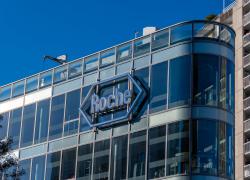
Triple data take Nuvalent's market cap above $3bn
After touting NVL-655 as being active in patients resistant to a third-generation ALK inhibitor, Nuvalent now has clinical data to back this up.
After touting NVL-655 as being active in patients resistant to a third-generation ALK inhibitor, Nuvalent now has clinical data to back this up.

Nuvalent stands as probably the only biotech to have floated in 2021 and delivered a significant return, and yesterday its investors had even more reason for cheer. The stock surged 36% on the unveiling of a Triple meeting abstract backing the activity of Nuvalent’s ALK inhibitor NVL-655, taking the company’s valuation above $3bn – remarkable given the current market malaise.
The data appear to back NVL-655’s efficacy in lung cancer, with activity in a range of patients who had progressed on the current ALK inhibitor market leader Alecensa, as well as on Lorbrena, which was designed to work in resistant patients. Not only that, but they come on top of promising activity for Nuvalent’s lead asset, NVL-520, which targets the related ROS1 mutation and had already impressed earlier.
As such, the developments lend weight to Nuvalent’s ability to design molecules that are brain penetrant and can hit a variety of mutations that develop in response to earlier-generation tyrosine kinase inhibitors. That had been the promise of Nuvalent’s 2021 IPO, which raised $166m, since when the company’s stock has more than tripled.
Alkove-1
Data to be presented on NVL-655 at this month’s Triple (AACR-NCI-EORTC) meeting come from the first-in-human Alkove-1 study, in 54 patients with ALK mutation-driven NSCLC. 33 of these got NVL-655 15-150mg once daily and are efficacy evaluable, Nuvalent says.
Overall the company reports a 45% remission rate, though eight of the 15 partial responses have yet to be confirmed. The real interest, however, comes from delving deeper into patients’ mutations; the ORR in those with baseline ALK resistance mutations was 65%, Nuvalent said, while in 29 patients who had progressed on Pfizer’s Lorbrena the ORR was 41%.
The ALK-mutant NSCLC space was shaped by Pfizer’s Xalkori, but other drugs followed into the first-line market, of which Roche’s Alecensa is now the best-selling. Pfizer then developed the brain-penetrant Lorbrena as a “third-generation” drug, and this gained approval first in post-Xalkori and post-Alecensa patients, and then in the front-line setting.
Now Nuvalent wants to upset the apple cart. NVL-655 is a brain-penetrant inhibitor designed to hit wild-type ALK, as well as remaining active in the presence of mutations conferring resistance to first, second and third-generation ALK inhibitors. It is also said to avoid the related TRK (the target of Roche’s Rozlytrek and Bayer/Lilly’s Vitrakvi), thus avoiding added toxicity.
Much of the focus when full data are presented at the Triple Meeting on 13 October will be on precisely what NVL-655’s activity was in which patients. Nuvalent summarises baseline characteristics in Alkove-1 as being 53% exposure to three or more prior ALK inhibitors, and 77% exposure to at least one second-generation ALK plus Lorbrena.
Selected ALK and ROS1 inhibitors in NSCLC
Source: OncologyPipeline.
In a recent note Oppenheimer analysts wondered whether NVL-655 could “support Nuvalent’s sky-high valuation”, cautioning that the project was targeting a crowded space, but accepting that activity post-Lorbrena was a differentiating factor. They also said 30% activity in double-mutation patients would be a success; 32% of Alkove-1 patients had compound mutations, but for now Nuvalent hasn’t split out efficacy data in these.
Either way, the data broadly mirror the activity of Nuvalent’s lead, NVL-520, which targets the related ROS1 mutation – a space where Xalkori is also approved, along with Rozlytrek. in August Nuvalent reported 48% ORR in the Arros-1 trial, including 53% in 17 patients who had failed at least two ROS1 inhibitors, and 78% in nine with a known ROS1 resistance mutation.
A key question, given such activity, is how Nuvalent intends to position NVL655 and NVL-520. It’s great to show activity in multiple drug-exposed patients with resistance mutations, but for the big prize Nuvalent will have to take on the market leaders head on in the front-line setting.
1696













